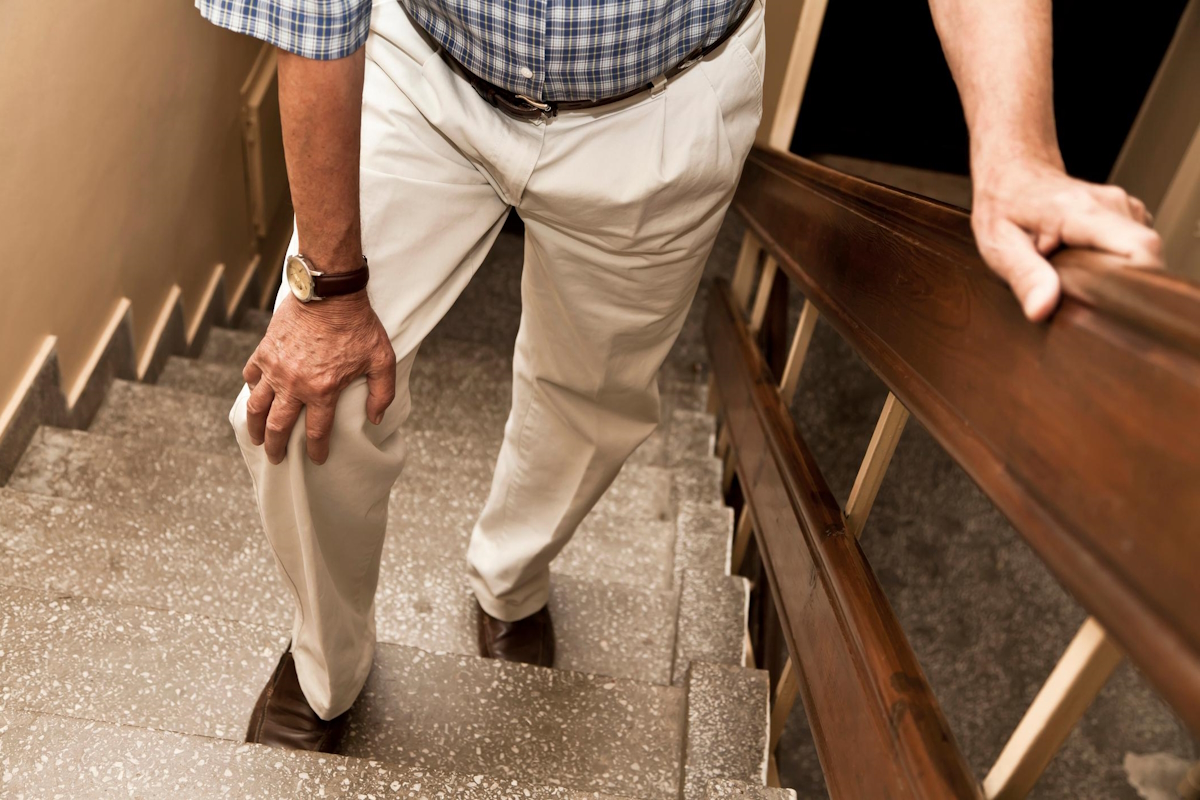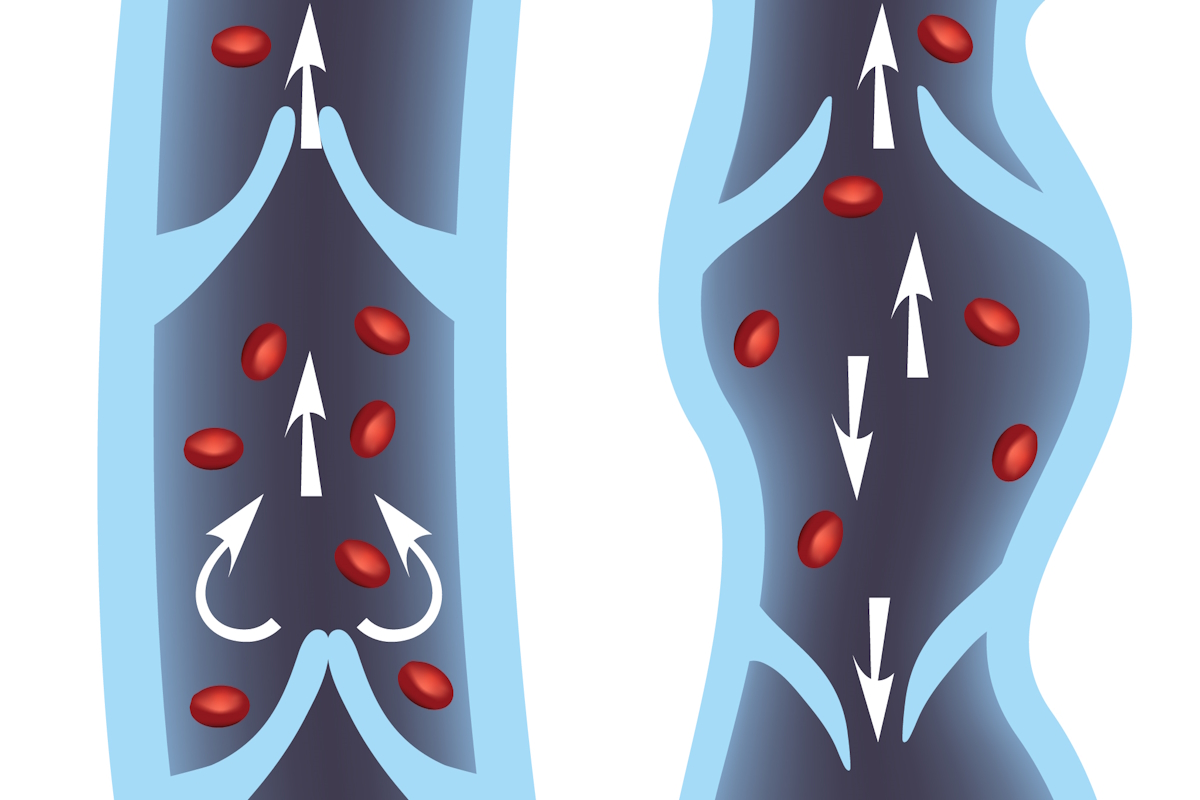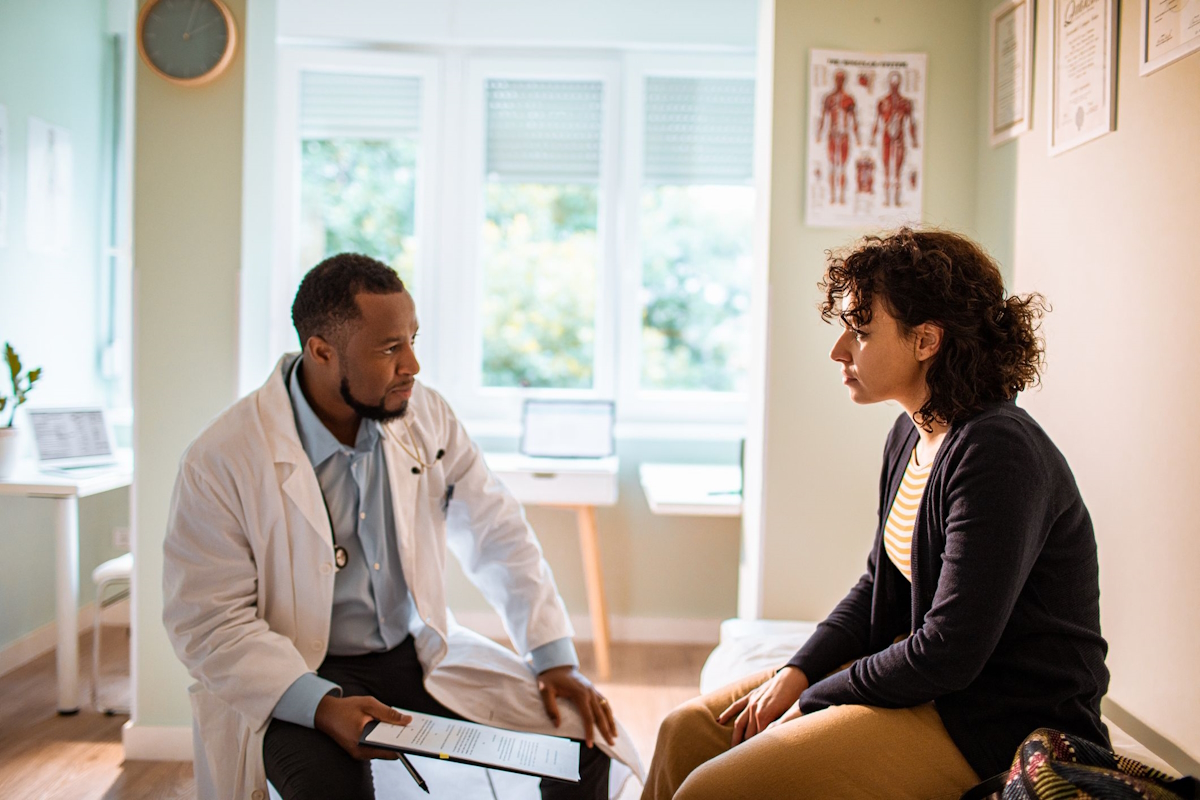When Katie* began experiencing persistent leg pain, her first reaction was to ignore it. She had returned from a hiking trip with her family a few months earlier and made it through the activities just fine despite never being the active type. She was also a little overweight. As a result, she figured her sluggish legs, cramping, and tired feet were simply muscular and would go away with time and rest. Her family wasn’t quick to agree and wondered if Katie’s symptoms were due to an underlying issue. Perhaps they were overreacting; Katy sure thought so. Yet they still urged her to see a doctor to know if her leg pain was muscular or something else.
Everyone experiences leg pain at one time or another and might quickly think it’s from muscular stiffness and soreness. This is especially true if we’ve been on our feet longer than normal, suffered an injury, or have been exerting ourselves through physical activity. But if those symptoms don’t improve quickly, or we cannot point to a specific reason for the pain, it is worth exploring if something more serious is happening.
The good news is that there are distinct differences between muscular and vascular leg pain. Therefore, our experts at Hamilton Vascular can pinpoint the reasons for your symptoms and recommend an individualized plan to deliver the best results if what you are experiencing is vascular-related.
Is your leg pain muscular or vascular? Request an appointment with Hamilton Vascular’s specialists to know for sure. Appointment
What Does Muscular Pain Feel Like?
Muscular pain is extremely common and is often described as a dull or achy pain. More often than not, it is localized to a specific area (legs, arms, back, etc.), but it can also be more widespread and involve the joints, ligaments, tendons, and soft tissue. Muscular pain can be caused by stress, anxiety, infections, illnesses like the flu, injuries like a pulled muscle or sprains and strains, car accidents, and even something as simple as sitting or standing for too long. But it can also have causes that aren’t due to underlying diseases. For example, a person like Katie who performs a physical activity like hiking or running for the first time will likely have mild to moderate muscular leg pain that starts during or just after the activity.

Muscular pain is extremely common, even in athletes in peak physical condition. This is because muscles and the connective tissue around them get damaged during moderate to intense exercise. There is nothing to worry about since the damage comes in the form of micro-tears in the muscles, which builds back stronger during the repair process. But in the meantime, they trigger an inflammatory response that leads to a variety of symptoms, such as the following:
- Short-term achy or dull pain in muscles and joints
- Tenderness, throbbing, and stiffness
- Muscle cramping and spasms
- Inflammation or swelling
- Limited range of motion in the affected area
- Muscle weakness
- Pain that worsens with movement or activity
- Stiffness that worsens with inactivity
Muscular leg pain is generally short-term and can be treated with rest, ice, heat therapy, massage, stretching, physical therapy, and over-the-counter medication.
Is your leg pain keeping you from living your best life? Schedule a consultation with Hamilton Vascular’s expert physicians. Appointment
Could My Leg Pain Be Vascular-Related?
One of the biggest differences between muscular and vascular pain is whether it is chronic and if there is seemingly no explainable reason for the pain. In other words, you haven’t been exerting yourself with exercise and can’t point to a specific injury or illness. Leg pain may come and go but is still ongoing and constant. Therefore, your legs may be uncomfortable when you move, and they can even cause problems while you are at rest. You certainly can’t do all the things you used to love doing, and all you want is relief. For some people, the root cause is vascular.

At first, there may not be any symptoms. But if left unchecked, uncomfortable leg pain can set in. Patients often describe vascular leg pain as:
- Heavy or tired legs and feet
- Tingling and numbness
- Swelling in the affected area
- Cramping
- Pain that is more severe with activity and decreases with rest
- Redness or discoloration of the skin
- Skin is warm to the touch
- Painful varicose veins
- Chronic wounds that won’t heal
Vascular disease is any disease of your vascular system, which includes your veins and arteries. Veins are a type of blood vessel that return deoxygenated blood from your organs back to your heart. Your veins connect with other vessels that bring blood to organs throughout your body. Arteries are also blood vessels but different from veins. Arteries deliver oxygenated blood from your heart to the rest of your body. The problem is that vein valves can age as we do and reach a point where they can’t do their job as efficiently as they once did. Arteries can also narrow and suffer from plaque build-up. As a result, blood flow and circulation are severely inhibited.

Risk factors for vascular diseases include the following:
- Not getting enough physical activity (sedentary lifestyle)
- Being overweight or obese
- Existing medical conditions (high blood pressure, diabetes, high cholesterol, and chronic kidney disease)
- A family history of vascular disease
- Age
- Unhealthy diet
- Excessive drinking and smoking
While there are distinct differences between muscular and vascular leg pain, there is no way to tell the severity of your vascular problems without consulting a vascular and vein specialist like the ones at Hamilton Vascular. We are committed to diagnosing and treating the root cause of your leg pain rather than focusing solely on symptoms. When the root cause is addressed, patients typically find they are not in as much discomfort and can go on to lead normal lives.

You don’t have to let vascular disease control your life. We have expert vascular doctors in South Texas ready to help. Appointment
Minimally invasive treatment options exist to get the leg pain relief you’ve been looking for. This includes:
- Sclerotherapy — Specialists inject a small amount of a specially formulated chemical solution full of sclerosing agents into the affected veins to reduce pain and discomfort caused by the enlargement or swelling of the veins. This solution irritates the vein walls and causes the vein to collapse and disappear.
- Microfoam ablation — With this procedure, your specialist injects a special microfoam into your affected veins to relieve symptoms without the use of heat or tumescent. The foam fills the desired section of the vein, and the diseased vein collapses. Blood flow then shifts to healthier veins nearby.
- Radiofrequency ablation — A thin catheter is inserted into the diseased vein through a small puncture. The catheter is guided up into the great saphenous vein in the thigh or the small saphenous vein in the calf. The radiofrequency energy is delivered to the inside of the vein, cutting blood flow and relieving symptoms.
- Angioplasty — This balloon system opens up narrowed or blocked arteries. A catheter is inserted through a small incision and advanced to the affected artery. There is minimal downtime.
- Atherectomy — This procedure uses advanced laser technology to erase plaque build-up in the arteries. It can be performed on its own but is often combined with angioplasty and stenting.
- Stenting — A small mesh tube is used to keep a closed-off blood vessel or artery open for the long term. This procedure greatly reduces the chance of a reoccurring blockage.
Hamilton Vascular Can Treat Vascular-Related Leg Pain
Everyone experiences leg pain at one time or another and might be quick to assume it is muscular stiffness and soreness. This is especially true if we’ve been on our feet longer than normal, suffered an injury, or have been exerting ourselves through physical activity. But if those symptoms don’t improve quickly, or we cannot point to a specific reason for the pain, it is worth exploring if something more serious is going on.
Our specialty team includes vascular surgeons and vein specialists. This helps us stay on the cutting edge of medicine, helping patients avoid traditionally long invasive surgeries used in the past to treat vascular disease.
Patients suffering from a multitude of vascular conditions that include venous insufficiency, varicose veins, spider veins, diabetic vascular disease, venous ulcers, peripheral artery disease, leg discoloration, lymphedema, restless legs syndrome, and more can benefit from these minimally invasive treatments. Procedures take place at in-office or outpatient settings. Most procedures are covered by medical insurance and Medicare.
Please contact us at 866-552-4866 or complete the appointment form to schedule a consultation. We are here to help, all while providing compassionate patient care.
AppointmentPrior to starting any new treatment or questions regarding a medical condition, always seek the advice of your doctor or other qualified health provider. This information is not a substitute for professional medical advice.
Hamilton Vascular serves the South Texas area including Houston, San Antonio, Austin, Round Rock, Bastrop, Brushy Creek, Cedar Park, Converse, Georgetown, Hutto, Kyle, Leander, Marble Falls, New Braunfels, Pasadena, Pearland, Pflugerville, San Marcos, Schertz, Houston, Sugar Land, Katy, Webster, Bay City, Clear Lake, Lake Jackson, The Woodlands, Universal City, Spring, Kingwood, Stafford, Conroe, Texas City, Cypress, League City, Bellaire, and more.
*Patient stories are true. Names and/or photos may be changed to protect patient confidentiality.

